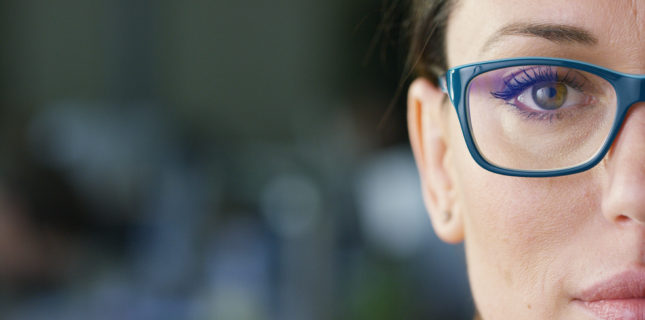
Visual Diversity
PAL designs have historically been created based on the “one-design” concept, meaning they offer the same solution for every patient. The problem? Everyone’s needs aren’t the same. For example, does someone who has just become presbyopic, have the same visual needs as a 70-year-old? No.
Tip: Take into account the fact that 32% of wearers ages 40-45 switch viewing distances more than five times an hour vs. only 8% of 60+ presbyopes.
THE PROCESS
Knowing that is one thing. Addressing it, and understanding exactly what those differences are, is something else entirely. Shamir took on that challenge and conducted extensive research that utilized methods of what’s known as Big Data along with elements of Artificial Intelligence (AI).
The end result is a lens design that can adapt to diverse patient needs—the new Shamir Autograph Intelligence™ lens that launched in October. But the findings it made along the way are also important for ECPs and staff members to understand and take into account with patients of varying ages.
THE WEARERS
The research revealed a definite correlation between patients’ visual needs and their VisualAge™. What exactly is that age? It’s the physiological age of the eye, which is defined by the required addition and is generally correlated with chronological age.
Here are a few of those findings:
• YOUNGER PRESBYOPES. They require a good solution for digital reading as well as support for dynamic vision. At this age, near vision is a lower priority since most reading is on handheld digital devices.
• MODERATE PRESBYOPES. These wearers demonstrate more balanced needs. All vision zones hold more or less equal importance.
• ADVANCED PRESBYOPES. They need a good solution for far and near vision, while intermediate vision and digital reading are a lower priority.
THE DIFFERENCES
Shamir’s proprietary research pointed to many visual differences between age groups. Here are just a few of them.
• SWITCHING BETWEEN DISTANCES. Nearly one third (32%) of wearers ages 40-45 switch viewing distances more than five times an hour vs. only 8% of presbyopes who are 60 and over.
• DRIVING +OUTDOOR TIMES. Among those surveyed, presbyopes between 50-55 spend the most time behind the wheel (13.4 hours a day), while seniors drive the least.
• PRINTED MATERIAL. The youngest presbyopes (ages 40-45) only read printed material an average of 1.9 hours a week, whereas people surveyed over age 60 read newspapers, books, etc., an average of 10.2 hours a week.
• SMARTPHONES +TABLETS. Not surprisingly, new presbyopes (ages 40-45) spend the most time on their smartphones and tablets — 3.9 hours a day. On the other hand, over-60 presbyopes only use them an average of 1.53 hours per day.
• COMPUTERS. The heaviest computer users at 6 hours a day are presbyopes between 50-55. The least, according to Shamir’s proprietary research, are those over age 60.
The bottom line? Not all presbyopes have the same visual requirements. As a result, the design of their PALs should reflect those differences by meeting consumers’ changing visual needs.
What differences do you see among presbyopes of varying ages in your practice? Tell us and share in the conversation on Facebook here.
Image credit: HQUALITY/stock.adobe.com
Comments are closed.







